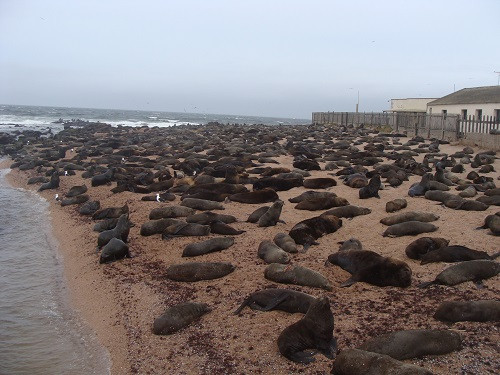Human hunting has turned sea lions and fur seals into 'super-predators'
Since the 19th century, human activity has profoundly changed marine ecosystems and the role of megafauna in South America.
The hunting of sea lions and fur seals on the Atlantic coasts of South America has irremediably changed the region's ecosystem, scientists have said. As their numbers were reduced, the two species progressively became super-predators.
Europeans settlers arrived in South America in the 16th century, and by the end of the 19th century they had started intensively exploiting the marine resources off the coasts of the continent.
Although sea lions and fur seals had been hunted for thousands of years by local hunter-gatherers for food and for their oil, skin and furs, this had not had a significant impact on the dynamics of the whole marine ecosystem.
This is not the case of the recent intensive European exploitation. The hunting of megafauna, such as sea lions and fur seals by Europeans, as well as the fishing of these animals' prey, led to their dramatic decline. This has had larger consequences: it has profoundly altered the whole ocean ecosystem's structure and food pyramid.
Scientists from the University of Barcelona and the National University of Patagonia (Argentina) investigated these changes.
They worked together on a large research project, looking at the effects of the exploitation of marine life by humans on the functioning of food networks in marine ecosystems of South America, over the past 6,000 years. Two articles on the subject have so far been published, in the scientific journals Oecologia and Paleobiology.
What sea lions and seals eat
A large part of the research involved collected sea lions' and fur seals' bones from archaeological sites in Patagonia and bones belonging to modern scientific collections. The scientists analysed the stable isotope ratios in these bones, as well as in ancient and modern shells of molluscs to help the comparison between bone samples from different periods.
From the isotope data, they were able to recreate the animals' diets over the past 6,000 years and compare them to current ones. The scientists found that these diets didn't change much when local hunters were the only ones exploiting the two species, but important changes were observed since the 19th century.

"Everything suggests that aboriginal exploitation didn't affect their diets or the structure of the trophic network, although it was common to eat sea lions and fur seals as well as some marine fish and birds," says project co-director Lluís Cardona.
The change in diet has not been as shocking for fur seals as for sea lions, as the former are limited by the size of their small mouth. However, sea lions went from eating anchovies to hake and octopuses.
Combined with these diet changes, the reduction in the numbers of sea lions and fur seals following the arrival of Europeans had a direct impact on preys. The result was an alteration of the food pyramid and the ecological role of these large marine vertebrates in the southern Atlantic ocean.

Paradoxically, the hunting and progressive disappearance of sea lions and fur seals may have turned them into super-predators. "Sea lions and fur seals have now a higher trophic level compared to the times of the Europeans' arrival. They are now apex predators, that is, super-predators. This surprising result can be understood since the population of sea lions is now lower and therefore, there is more food for each animal, despite the development of the fishing activity," Cardona explains.
Sea lions and fur seals now live in a new ecosystem shaped by humans and the scientists are concerned that it will be impossible to restore natural ecological systems as they were 6,000 years ago.
© Copyright IBTimes 2025. All rights reserved.






















